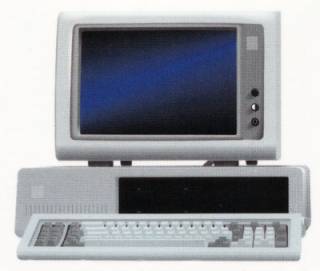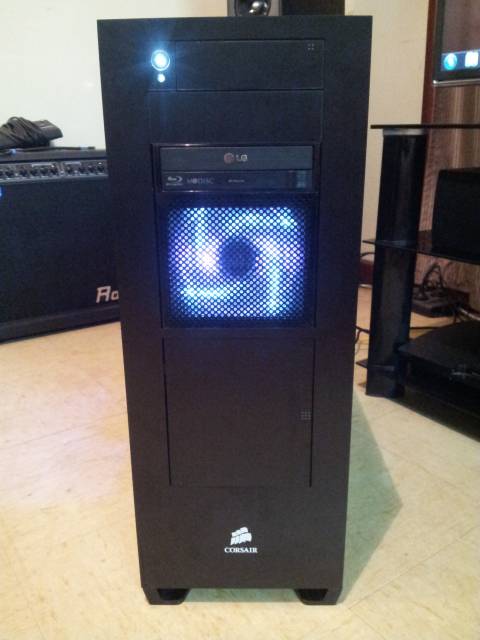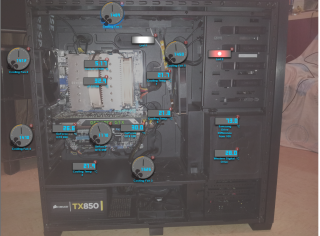@ubersmake said:
I haven't done the proper research yet, but could someone explain "static pressure?" My knowledge of fans and such is limited to:
- Heat rises.
- Make sure air gets sucked in and gets blown out.
Which did make it somewhat amusing when I had to take out a fan to get something into my machine, and accidentally put it back in facing the wrong direction.
It gets complicated, but luckily you only need to understand or bother with the science with it if you really want to get into it.
Heres what i understand. Fans will be rated for a CFM (cubic feet per minute or something) - Think of this as how hard it can push air through. When you have a fan which is obstructed (by computer components etc), you will want a higher CFM. So for things like radiators and stuff you want to worry about a higher CFM i suppose. But i know nothing about those setups, so I cant tell you much more. Now the thing is pretty much all the manufacturers exaggerate their CFM anyway, if you do get to a point where you want to get choosy with fans this is a good resource http://www.tomshardware.com/forum/331629-28-cooling-roundup-2012 .
Really if you just find something recommended like noctuas or noiseblockers or whatever, that's probably going to be fine. It's not worth agonising over. I've got noiseblockers and I reccomend those, they run quietly and have a decent CFM that is pretty accurate to what they advertise to. The Noctua's seem pretty good, they have a natural noise as opposed to any sort of whirring, but man are they bland to look at.
Anyway so the thing worth thinking about and where the cfm thing comes in, is the subject of positive or negative pressure.
So the basic idea is this, your case is basically a box right so imagine an empty box, imagine you have one fan hooked up to push air in and one to push air out.
Now imagine the fan pushing the air in is rated with a higher CFM, so it's pushing more air in than can go out at a natural rate. This causes slight pressure in the box as the air tries to escape out of the box.
Now imagine you hookup three fans intaking and one exhausting. Your going to have some strong POSITIVE pressure in that box. Because of the pressure the air will push hard to escape out, it will try and exhaust out of any open holes or vents in the box.
Ok so imagine you set up the box the other way, three exhausts and one intake, NEGATIVE pressure. The air is trying to rush into the box from the outside.
The main reason you need to consider this is dust. A setup with a negative pressure bias will cause your system to build up with dust, because it's all trying to get in the box and it won't want to leave, whereas a positive pressure setup will act to keep dust out, though you want to make sure you have dust filters on your intakes.
The second reason to consider is in the case of a positive pressure setup, pressure will push the hot air produced by your components out of the case, so if you leave some open grates nearby this can help around the GPU for instance. In this instance it's often helpful to block off any open vents that don't promote good airflow. If you can leave venting open around your GPU, while closing off vents somewhere else, it forces the air to take the single path.
When you setup you're computer you generally don't want it biased to much one way or the other, excessive pressure one way or the other can cause your fans to overwork or vibrate and make noise. In the case of a dusty environment, I would lean toward a positive pressure setup. Some people prefer a negative pressure setup because it's supposedly a little bit cooler, especially if you are in a hotter environment.
Now aside from all this the other important consideration for all of this is your fans positions and how this all ties together to affect airflow. Good airflow around your hotter components is probably the most important thing (especially in the case of your GPU's). In this case it's probably helpful to take a picture or draw a diagram to see what the path the air is likely to take depending on the positioning of your fans and their CFM.
Also yes remember Heat rises, though this isn't always a factor good airflow will basically negate it's effect. If hot air is getting pushed out the side with a fan, it's only going to rise as far as when the fan hits it.



Log in to comment